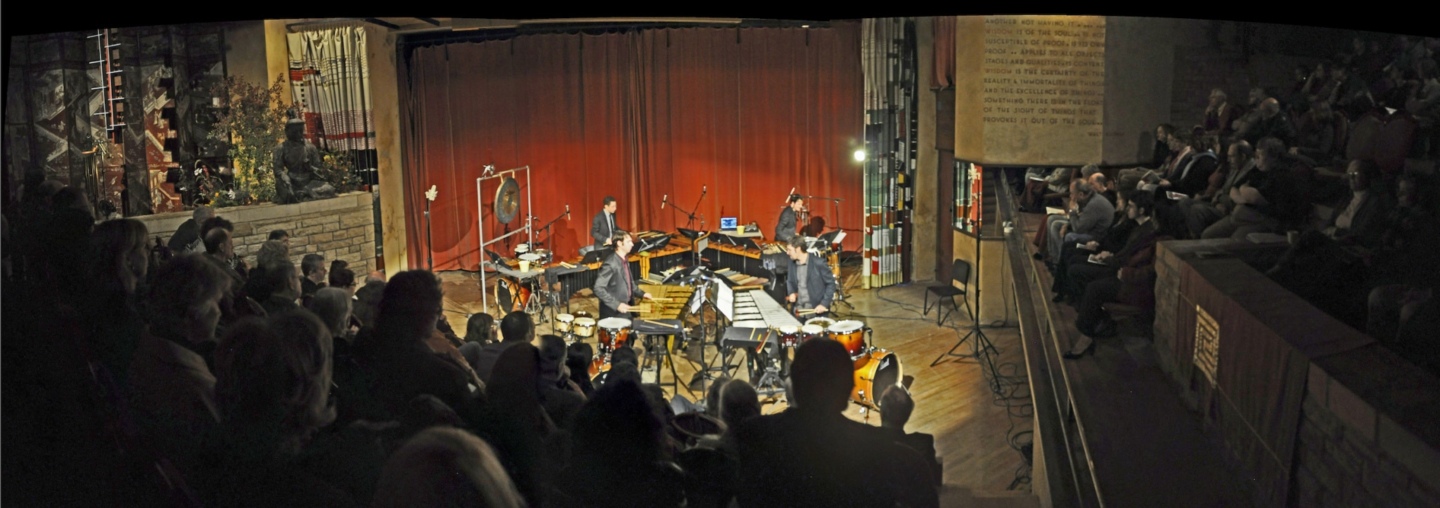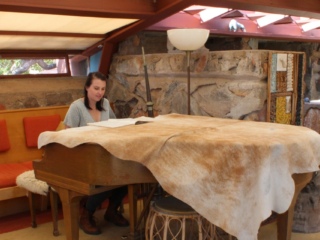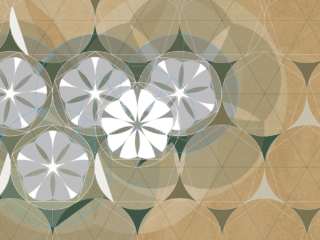
The Connections and Illuminating Disparities Between Architecture and Music
David Skidmore | Jun 4, 2021
An Ensemble Member and Executive Director of Third Coast Percussion, David Skidmore describes his 2011 experience of having to write “Common Patterns in Uncommon Time” to celebrate the centenary of Taliesin.
In 2011 I was asked by my good friend, Sidney Robinson, to write a piece of music to celebrate the centenary of Taliesin. Sid and I actually met for the first time at Taliesin when the quartet that I perform with, Third Coast Percussion, was playing at the Hillside Theatre at Taliesin for the first time.
Sid and I (and Wright) share a fascination with the connections and illuminating disparities between architecture and music. Surface similarities between the two disciplines, such as a shared vocabulary (rhythm, form, material), are not so interesting to me. I think they are more coincidental than substantive. But Wright’s use of common patterns—such as simple geometric shapes—layered together in unusual and unexpected ways immediately makes me hear music.
Architects are forever finding new ways to combine floors, walls, and ceilings into spaces that excite, or sooth, or inspire their inhabitants. Musicians, in turn, are forever finding new ways to combine harmonies, melodies, sounds, and rhythmic motives into sonic experiences that excite, or sooth, or inspire their listeners. Combinations of the familiar, even the mundane, into something new and breathtaking is the alchemy that is shared by all creative practices.
“…striving for entity, oneness in diversity, depth in design, repose in the final expression of the whole — all these are there in common pattern between architect and musician.”– Frank Lloyd Wright
I find inspiration in Wright’s work, and Taliesin in particular, on many levels. Sid likes to say that “Taliesin was always changing, but it was always Taliesin.” So this structure belies one of the greatest differences between music and architecture: the temporal and ephemeral nature of the one, and the permanence and immutability of the other. Wright created themes in the original 1911 Taliesin that carried him through the next 50 years of rebuilding and adding on to the structure. How incredible to be able to tinker with a building off and on for decades, and still have it come out as a cohesive and unified work of art.
This is particularly poignant for me today, in 2021, when my piece Common Patterns in Uncommon Time is now 10 years old, and I’m revisiting it with my bandmates for the first time in 8 years. It’s been fun to revisit the structure and materials of the piece with another decade of music-making under our belts, and I’ve done some tinkering of my own. But somehow, the musical structure that I made feels fixed—as though editing too much of the original piece will cause the whole thing to crumble around me. This is of course entirely in my head, but I do think it’s interesting that Wright was able to edit and enhance a building, Taliesin, over such a long period of time, and the piece of music I wrote inspired by Taliesin somehow seems to resist change. I just love that these two disciplines can bely expectations in this way.
Third Coast Percussion performed Common Patterns in Uncommon Times live on Frank Lloyd Wright’s 154th birthday, June 8, 2021. You can watch the a recording the performance below.



